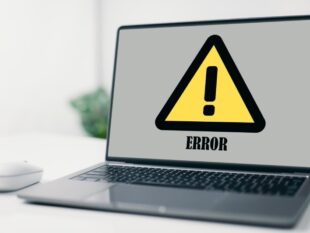Top 5 Compliance Pitfalls in Procurement and How to Avoid Them
by Barsha Bhattacharya Our Blogs Published on: 16 April 2025 Last Updated on: 07 May 2025

A common issue to remember is procurement compliance in supply chain management.
It’s important irrespective of whether we’re sourcing equipment, materials, or something different.
Many businesses often fail by solely focusing on cost and efficiency. As a business it’s important to also ensure that every procurement decision aligns with legal regulatory and ethical standards. That’s why compliance is crucial.
However, with enough good intentions, businesses are often exposed to financial penalties. Reputational damage can lead to an overall operational shutdown.
So, what are such important compliance issues to pay attention to for avoiding mistakes?
Here are five pitfalls in procurement compliance.
1. Lack of Transparency in Supplier Selection
Lack of transparency in the process of selecting the right supplier is the first challenge. We have broken it down into three components – why it’s an issue, the risks associated with it, and how to fix it.
Why It’s a Problem
Transparency is the core of a compliant procurement process. When your supplier selection lacks transparency, it can create bias and several unethical behaviors.
It’s hard to ensure that your organization follows the due process without proper documentation. That’s why there must be documenting the process you have for choosing supplier for a job.
Without clear criteria and documentation, it’s hard to demonstrate that your organisation followed due process or chose the best supplier for the job.
Lack of transparency can also discourage competitive suppliers from bidding on future opportunities, reducing your access to innovation and value for money.
Common Compliance Risks
- Bribery and corruption: Suppliers may offer incentives to secure contracts unfairly.
- Unfair competition: Awarding contracts without competitive bidding can violate procurement compliance.
- Lack of diversity and inclusion: Failure to consider diverse or minority-owned suppliers can impact compliance with social value policies.
How to Avoid This Pitfall
- Create a Supplier Selection Framework: Build a structured process for procurement. You must have a strong process which includes a predefined criteria for evaluation.
- Use technology for supplier vetting: Procurement software can track supplier performance, compliance status, and certification history.
- Ensure competitive bidding: Open and fair tendering processes reduce bias and increase value for money.
- Maintain a robust audit trail: Keep detailed records of procurement decisions to demonstrate compliance.
2. Failure to Ensure Supplier Compliance with Regulations
Failing to ensure supplier compliance according to regulations is also another common procurement pitfall to avoid. Here are the reasons why it’s a big problem and the different ways to solve it.
Why It’s a Problem
Just maintaining your own compliance isn’t the end of your responsibility. Regulators also require you to ensure that your suppliers are also compliant with the common aspects of compliance.
This includes everything from health and safety standards to modern slavery legislation. If your suppliers fail to meet legal obligations, your business could face the consequences.
This risk is especially critical in industries like construction, manufacturing, and healthcare, where non-compliant suppliers can jeopardise not just contracts, but lives.
Common Compliance Risks
- Non-compliance with health and safety laws: Contractors and suppliers must adhere to relevant health and safety regulations.
- Environmental violations: Sourcing from suppliers who disregard environmental standards can lead to legal consequences.
- Ethical sourcing concerns: Modern slavery, child labour, and unfair wages are key concerns in global supply chains.
How to Avoid This Pitfall
- Conduct rigorous supplier due diligence: Require suppliers to provide compliance documentation, such as health and safety verifications.
- Implement regular compliance checks: Ongoing monitoring ensures suppliers maintain compliance over time.
- Utilise third-party verification services: Verification schemes like Veriforce CHAS Elite help verify supplier compliance.
- Include compliance clauses in contracts: Clearly outline regulatory expectations and penalties for non-compliance.
3. Inadequate Contract Management

Managing contacts in the supply chain or in any business is an important aspect to prioritize. Poor contact management can lead to more than one problem.
Why It’s a Problem
It can cause cost overrun, project delays. In worst case scenario, it can be the reason behind failing to meet compliance milestones. Also, if you’re not monitoring obligations or tracking performance, you could be liable for breaches.
You may also find it harder to enforce service-level agreements or resolve disputes efficiently if your contract documents are dis organised or out of date.
Common Compliance Risks
- Breach of contract: Suppliers failing to meet agreed-upon obligations can disrupt operations.
- Lack of performance tracking: Inconsistent contract monitoring leads to poor supplier accountability.
- Unclear terms and conditions: Vague contract terms can cause disputes and compliance challenges.
How to Avoid This Pitfall
- Use contract management software: Digital platforms can automate contract tracking and alert procurement teams to key deadlines.
- Define clear performance metrics: Include KPIs for quality, delivery timelines, and compliance standards.
- Conduct regular contract reviews: Periodic assessments ensure both parties adhere to agreed terms.
- Establish clear dispute resolution mechanisms: Predefine resolution processes in case of contract breaches.
4. Inconsistent Record-Keeping and Documentation

Not being able to keep records of documents can become a problem. It can create inconsistency, leading to compliance issues and other operational hurdles.
Why It’s a Problem
Another supply chain mistake is to avoid documenting processes and keeping records. Poor documentation can hinder operations and also cause difficulty during audits.
As a result, it can be the caue behind failure to compliance checks. In fact, it’s often the main reason behind fines, or other risks, and enforcement actions.
Auditors, regulators, and even internal leadership will expect to see well-organised records of procurement decisions, risk assessments, and supplier qualifications.
Common Compliance Risks
- Failure to provide audit evidence: Inadequate records make it difficult to prove compliance.
- Data inaccuracies: Incorrect or missing information can lead to procurement errors.
- Regulatory non-compliance: Incomplete documentation may violate industry-specific regulations.
How to Avoid This Pitfall
- Implement a centralised document management system: Store procurement records digitally to ensure easy retrieval.
- Standardise documentation practices: Establish company-wide policies for record-keeping.
- Regularly audit procurement records: Conduct internal reviews to identify and address gaps.
- Train procurement teams on compliance requirements: Educate staff on the importance of accurate documentation.
5. Non-Compliance with Ethical Procurement Standards
Ethical procurement isn’t just a corporate social responsibility buzzword — it’s an essential part of compliance.
Why It’s a Problem
Regulators, investors, and customers now expect companies to uphold ethical and sustainable practices across their supply chains. Additionally, failing to do so can erode trust and damage your brand.
It can also lead to costly consequences under legislation such as the UK Modern Slavery Act or the EU Corporate Sustainability Due Diligence Directive.
Common Compliance Risks
- Modern slavery and forced labour: Failure to verify supplier labour practices can lead to legal action.
- Environmental harm: Unsustainable sourcing practices contribute to regulatory breaches.
- Discriminatory practices: Not engaging with diverse suppliers may conflict with corporate social responsibility (CSR) commitments.
How to Avoid This Pitfall
- Develop an ethical procurement policy: Outline company commitments to fair labour practices, sustainability, and supplier diversity.
- Engage only with verified suppliers: Work with verified suppliers who adhere to ethical standards.
- Conduct sustainability audits: Assess supplier environmental impact and corporate social responsibility efforts.
- Provide transparency in sourcing: Publicly share information on ethical sourcing practices.
Wrapping It Up!
Procurement compliance pitfalls is more than just tickign some check boxes for few quick fixes. It’s a list of things you do to ensure operational integrity. As a result, it can help secure long term business success.
It requires taking a proactive approach to transparency, supplier due diligence, contract management, record keeping, and ethical sourcing.
It can help reduce compliance pitfalls in procurement. It’s best to start by identifying the weak areas and the parts of the operation that could use innovation.



































































































